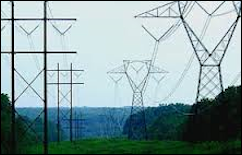Dominion Virginia Power is soliciting industry proposals to provide about 1,600 megawatts of electrical generating capacity by 2019-2020. “We have identified a need for additional generation in our long-term system planning,” says Roger Williams, director of power contracts. None of this will come from renewable resources.
Unlike some who opine on this blog, I’m agnostic about renewable energy. If solar, wind power, biomass and other renewable energy sources can be worked into the electric-generating mix without clobbering rate payers or creating reliability problems, I’m happy to have it. But my top priorities are keeping electric rates low and ensuring a reliable power supply. As countries like Germany have discovered, wind power quite literally changes with the wind, and solar power varies with cloud cover. That means power companies have to build and maintain an expensive backup capacity to keep the juice flowing at all times.
What I find surprising about Dominion’s announcement is that the company isn’t planning to build the added capacity itself, which is traditionally what power companies have done. The old rule of thumb was that building more power plants allows utilities to expand the rate base. Because utilities are guaranteed a financial return on the rate base (barring unusual circumstances), more capacity translates into bigger earnings. Somehow, under the new re-regulation regime, that old calculus no longer applies. I’m not sure what’s driving Dominion’s decisions financially right now.
Dominion’s solicitation requires that any new power capacity be located on the PJM regional interconnection grid that coordinates the wheeling of electricity across a region serving more than 50 million people. The utility, reports Peter Bacque with the Times-Dispatch, also wants the electricity to come from base-load plants (which generate 70% of the time) or intermediate plants (30% to 70% of the time). The electricity must be “dispatchable,” or available when needed. That last requirement excludes wind and power.
Basically, Dominion favors a Big Grid transmission framework as opposed to a Smart Grid framework. In a Big Grid arrangement, electric power can be shuttled from state to state, region to region, as supply and demand dictate — subject to the capacity of the transmission lines. The advantage of Big Grid is that power companies can select from a much broader array of options for generating capacity, not just in it own service area, which translates into lower generating costs. The flip side is that Big Grid requires more giant transmission lines to move the electricity — and people don’t like transmission lines running through their property. Another concern is that the more centralized an electric grid is, the more vulnerable it is to sabotage, extreme weather and other outside forces that could lead to cascading outages.
One alternative is the Smart Grid which allows for the two-way flow of electricity and the monitoring of electricity consumption with so-called smart meters. By collecting detailed data, power companies can better manage their power supplies, especially if rate structures give industry, business and households incentives to curtail electricity consumption during periods of peak demand. Smart grids are seen as essential to handling the variable supply created by solar and wind power, allowing power companies more flexibility in adjusting their power flows. Smart grids won’t solve all the problems caused by the variability of renewable energy, but they are part of the solution.
Another big advantage, in theory at leas:. Because smart grids are more decentralized, they can accommodate locally generated power, which creates local economic opportunities. Also, in theory, they are less vulnerable to catastrophic disruption.
Dominion has dipped its toe into the smart grid arena — home electric meters, as I recall — but I’ve seen very little written about it in the press. Frankly, I have yet to see a coherent big-picture story about where the electric power industry in Virginia — which includes Appalachian Power and local electric co-op — is heading. It is difficult to make any sense of articles like the one published in the T-D today without the bigger picture.



